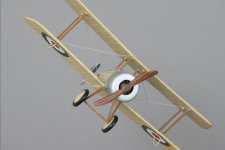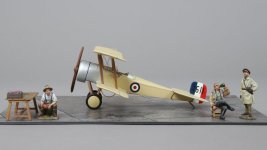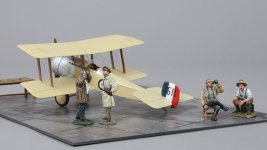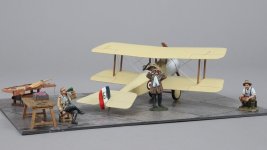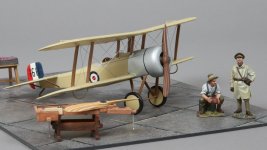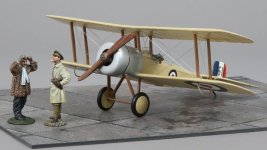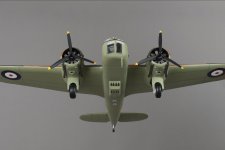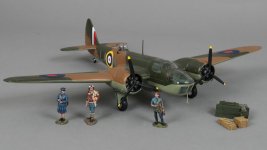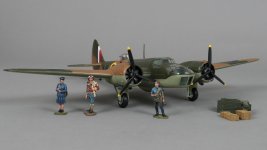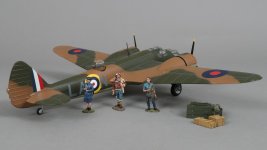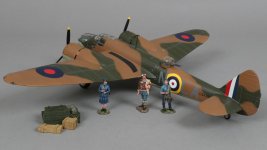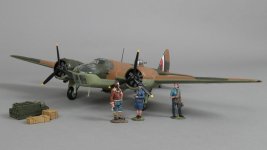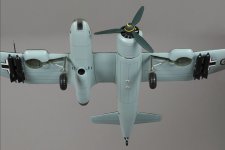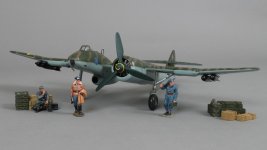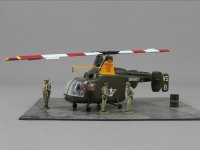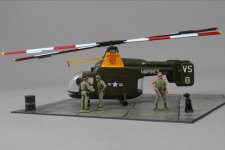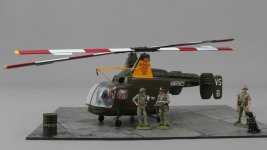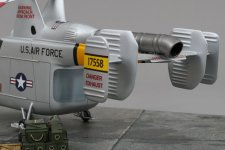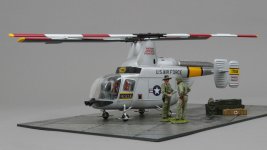WOW611 Bristol Scout
The Bristol Scout was a British single-seat rotary-engined biplane developed before the outbreak of WW1, serving as one of the earliest examples of a fighter aircraft. Originally conceived as a racing scout, it quickly found its role in combat thanks to its agility and speed — attributes sorely needed in the infancy of aerial warfare.
-
-
First flight: February 1914
-
-
Manufacturer: Bristol Aeroplane Company
-
-
Designer: Frank Barnwell & Harry Busteed
-
-
Primary role: Reconnaissance / Fighter (early adaptation)
-
-
Service years: 1914–1916
Technical Specifications (Scout C)
| Feature | Details |
|---|
| Wingspan | 24 ft 7 in (7.5 m) |
| Length | 20 ft 6 in (6.25 m) |
| Engine | Le Rhône 9C rotary, 80 hp |
| Maximum Speed | 95 mph (153 km/h) |
| Range | 250 miles (400 km) |
| Armament | Initially none; later Lewis machine gun (sometimes mounted atop upper wing) |
| Construction | Wood frame, fabric-covered |
Development & Evolution
The Bristol Scout underwent several iterations:
-
-
Scout A: Prototype – only two built; powered by 80 hp Gnome engine.
-
-
Scout B: Slightly improved prototype with modifications to tail and landing gear.
-
-
Scout C: Main production variant – around 161 built, widely used in service.
-
-
Scout D: Enhanced tail design; better control surfaces and flying qualities.
Combat History
Though never a true "fighter" by modern definitions, the Bristol Scout was one of the first aircraft to attempt air to air combat. Pilots improvised with pistols, rifles, and eventually, mounted machine guns — though synchronization gear wasn’t yet perfected.
Notable engagements:
-
-
Flown by Lt Lanoe Hawker, who achieved early air victories and was awarded the Victoria Cross.
-
-
Operated by the Royal Flying Corps (RFC) and Royal Navy (RNAS).
-
-
Used in early campaigns over France, Belgium and over the Mediterranean theatre of operations.
Pilot's Perspective
Pilots admired the Scout’s excellent handling and nimbleness, especially compared to lumbering reconnaissance aircraft of the time. But its lack of offensive capability and vulnerability against better-armed German fighters soon pushed it into training and secondary roles.
“It flew like a bird — and fought like a cornered cat.”
— RNAS pilot, 1915
Legacy
The Bristol Scout stands as a symbol of aviation’s swift leap from novelty to necessity in warfare. While quickly surpassed by more powerful and heavily armed machines, it represents the bold spirit of innovation that shaped early 20th-century air combat.
The Bristol Scout was not just an early fighter — it was a pioneer of combat aviation. Light, fast, and daring, it helped pave the way for the legendary biplanes that followed just a year or two later. In the words of aviation historians, it was a scalpel in the age of broadswords.
Our 1/30 scale Scout was the one flown by Lanoe Hawker, here is his story of how he won his VC:
Following an initial air victory in June, on 25 July 1915 when on patrol over Passchendale, Captain Hawker attacked three German aircraft in succession, flying a different Bristol Scout C, serial No. 1611, after his earlier No. 1609 had been written off, transplanting the custom Lewis gun mount onto No. 1611. The first aerial victory for Hawker that day occurred after he had emptied a complete drum of bullets from his aircraft's single Lewis MG into it, sending it spinning down. The second was driven to the ground damaged, and the third – an Albatros C 1 – which he attacked at a height of about 10,000 feet, burst into flames and crashed. (Pilot Oberleutnant Uebelacker and observer Hauptmann Roser were both killed.) For this feat he was awarded the Victoria Cross and the third military pilot to receive the VC of the war.
This particular sortie was just one of the many which Captain Hawker undertook during almost a year of constant operational flying and fighting. He claimed at least three more victories in August 1915, either in the Scout or an F.E.2.
Lanoe Hawker died in 1916 aged 25 years old, whilst engaging the Red Baron, becoming the Baron's 11th kill.
We have 3 x 1/30 scale Scouts available priced at $650 plus postage and packing.
The figures and accessories are shown for scale comparison purposes only and are not included.




